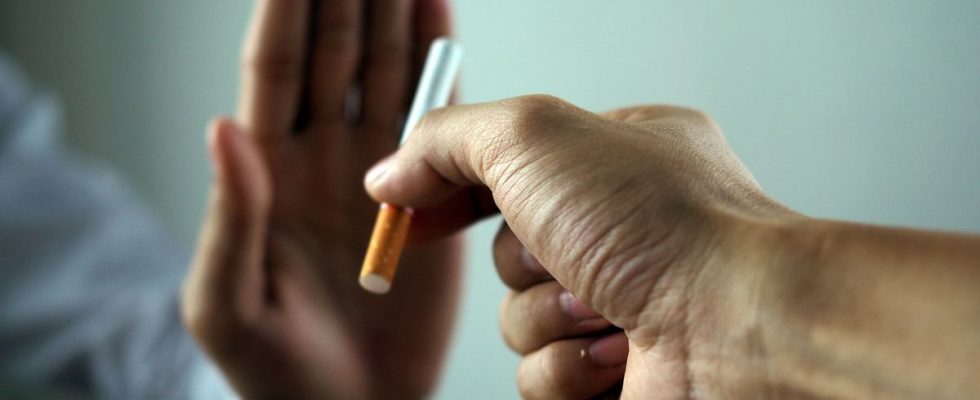Increase in the price of a pack of cigarettes, introduction of tobacco-free month, reimbursement of nicotine substitutes… All these measures have a cost. For the smoker or the smoker in the case of the increase in the price of the package, but also for the State, with prevention campaigns or the reimbursement of patches, gums, lozenges and mouth sprays. But is this tobacco control policy profitable? This is the whole subject of a report by the Organization for Economic Cooperation and Development (OECD), supported by Public Health France, and the results of which are published this Friday.
The report assesses the health but also (and above all) economic impact of the national tobacco control program, from 2016 to 2020. Because between these two dates, a (large) set of measures has been put in place. October 2016: the Month without tobacco is created. Beginning of 2017: the neutral package introduced. And from 2018 to 2020, the price of a pack of cigarettes has increased each year (+ 41% over the period for the most sold).
Avoid 4 million cases of chronic diseases
The OECD therefore wanted to verify whether these measures were profitable. “We used a sophisticated microsimulation model to quantify the expected long-term effects,” explains Marion Devaux, health policy analyst within the organization. The goal: to measure the economic effectiveness of tobacco control policies if they are maintained over the period 2023-2050.
“The results are positive,” rejoices Francesca Colombo, head of the health division at the OECD. If maintained, they would prevent 4 million cases of chronic diseases, such as cancers, cardiovascular diseases, respiratory tract infections or musculoskeletal disorders. This would save 578 million euros per year in health expenditure, or 4% of the amount allocated to preventive care in France in 2016.
Increased productivity at work
The study also tends to show the impact of the fight against smoking on the productivity of the French. “We calculated the impact on sick leave, but also on presenteeism or early retirement,” says Marion Devaux. Conclusion: these measures would contribute to increasing employment and labor productivity by the equivalent of 19,800 additional full-time equivalents per year, compared to a scenario in which they would not be applied.
In short, the total cost of tobacco control measures, estimated at around €148 million per year, would be offset by savings in long-term health care costs, estimated at €578 million per year. “An average return of 4 euros for each euro invested”, illustrates Francesca Colombo.
OECD experts agree that these measures must be continued and even reinforced in the years to come. Initiatives that must be combined. “The Tobacco Free Month campaign is very effective, but it is even more so in an environment where cigarettes are expensive and where it is easy to find a substitute for quitting,” underlines Viêt Nguyen Thanh, head of the tobacco addictions unit. Health Prevention and Promotion Department at Public Health France. Because, we recall, today in France, one in four people is a regular smoker, and 75,000 deaths were attributable to tobacco in 2015, or 13% of deaths for the year.

